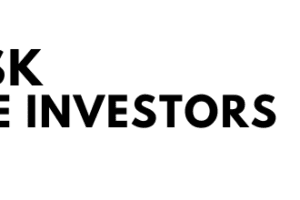
Cerberus Capital Management reports on the state of the institutional single-family rental market in summer 2024.

Cerberus Capital Management reports on the state of the institutional single-family rental market in summer 2024.

AFIRE is seeking proposals and article drafts for the next issue Summit Journal, to be released this September. Deadline: July 20, 2024.

As the commercial real estate industry continues to disambiguate post-pandemic uncertainties across all spectra, here are eleven charts to help investors map out the months ahead.

Summit Journal: Issue 15 is AFIRE’s first-ever almanac for the state of commercial real estate markets across all sectors at mid-year 2024.
Mary Ludgin, senior advisor and equity owner for Heitman, joins the AFIRE Podcast with Gunnar Branson to talk CRE and uncertainty in 2024.
Patrick Richard, CEO of Stoneweg US, sits down with the AFIRE Podcast to discuss the current state of ESG in commercial real estate, and why now is the time to lean in to smart sustainability strategy.

While rate hikes and pricing dislocations have frozen CRE liquidity, there is still a significant demand for equity. These conditions create prime vintage for secondary investments.

AFIRE is proud to announce that its publications, podcast, and events have recently been recognized with several top industry awards.

While rate hikes and pricing dislocations have frozen CRE liquidity, there is still a significant demand for equity. These conditions create prime vintage for secondary investments.
Paul Bernard, president and CEO of Affordable Homes & Communities, joins the AFIRE Podcast to talk about new approaches to the growing problem of housing affordability and attainability.

When it comes to market and asset selection, greater availability of property-level operational data and sophisticated tools to measure, analyze, and predict it (including AI) can help address key questions.

Without a framework that considers the causal factors underpinning the current office market dislocation, investors are left sifting through millions of square feet of office space in search of the right property.

General Stan McChrystal (Ret.), CEO and Chairman of the McChrystal Group, sits down with podcast host Gunnar Branson to talk about the state of risk management for global investors.

By blending emerging capabilities such data fluency and AI literacy with distinctly human strengths, creativity, and emotional adeptness, real estate leaders will be positioned to have an outsized impact for the commercial real estate industry.

Jeffrey Kanne, president and CEO of National Real Estate Advisors, sits down with podcast host Gunnar Branson to talk about the “new railways” of real estate: data centers.

Some recent research argues that more direct approaches to real estate investing can more effectively address the characteristics, opportunities, and risks associated with the current state of commercial real estate.

Mark Zandi, Chief Economist for Moody’s Analytics, joins Gunnar Branson and the AFIRE Podcast to talk interest rates, CRE, what’s next for the global economy.

Some recent research argues that more direct approaches to real estate investing can more effectively address the characteristics, opportunities, and risks associated with the current state of commercial real estate.

Anticipated moderation in new developments and the positive outlook for rent growth signal a more balanced multifamily market. Until then, investors should maintain a strategic and long-term perspective.

Anticipated moderation in new developments and the positive outlook for rent growth signal a more balanced multifamily market. Until then, investors should maintain a strategic and long-term perspective.
Enter your email address and password associated with your membership to log into AFIRE.org. If you are unable to login through this popup, go to https://members.afire.org to reset your password. For questions, contact us.